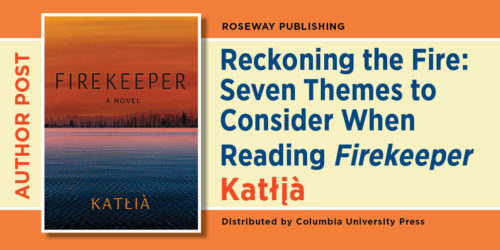Q&A: Robert Radin on Noche Triste

Robert Radin is the director of citizenship and immigration services at a prominent social service agency in Massachusetts. He’s the author of the memoir Teaching English to Refugees, and his work has been recognized in The Best American Short Stories and The Best American Essays. In Noche Triste: A Memoir of Anorexia, Radin explores his struggles with anorexia in the 1980s. He also examines the history of self-starvation―its roots in rituals of religious purification and its use as a tool of resistance. In this Q&A, he provides an intimate look at his own experiences with anorexia and self-starvation.
Q: How did anorexia begin for you?
Robert Radin: I first became aware of anorexia in the summer of 1978, when I learned that a friend’s sister was suffering from the disorder. The disease wasn’t fully part of the culture at that time, and I didn’t really understand what she was experiencing.
In my junior year of high school I took an art class and developed a crush on a girl who had anorexia. One day she disappeared. I didn’t find out what had happened to her until several years later, when I got into a relationship with her best friend.
I learned about anorexia from watching these two women, from studying their friendship and their separate forms of suffering.
My own starvation began following a trip to Tijuana with my girlfriend in 1981. I came down with dysentery and lost 10 pounds. And then I kept going. Eventually the disorder took over my life.
Q: Noche Triste explores not only your own struggles but also the history of self-starvation, including its roots in rituals of religious purification. What inspired you to tell your story in this way?
Radin: I added the subtitle of the book—A Memoir of Anorexia—at my editor’s recommendation. She felt I needed to give prospective readers a sense of what the book was about. My wife agreed, and she’s my boss, so I went along with it.
But the truth is I don’t think I had anorexia. I think anorexia is a very specific moment in the history of self-starvation, a type of self-starvation we saw in women in the United States between, roughly, 1950 and 1990.
These are the women Hilde Bruch wrote about in her early research and later in The Golden Cage. They were upper-class white women at first, though that changed. But we’ve used anorexia as a blanket term ever since, to describe self-starving behaviors that bear little resemblance to the clinical entity Bruch identified and treated. So it was important to me to explore the history of self-starvation, in part to challenge some of the assumptions we make when we say someone has anorexia and in part to try to locate myself in this history, to better understand what I experienced.
But back to my wife and my editor: the women in my life, over the years, have all been certain I had anorexia. It’s not even a question for them. I think it’s because of when they came of age; anorexia traumatized all of them in one way or another. They belong to that generation of women who first encountered anorexia as a pop culture phenomenon, then confronted it as a public health crisis. And I have to respect their perspectives. As women they went through something I didn’t go through. And that’s the real reason I signed off on the subtitle.
Q: We find you at a rather perilous moment at the end of the book. What happened? What changed for you?
Radin: My self-starvation led me to Mexico. When my girlfriend left me I returned to Los Angeles, and over the next year things got much, much worse. My weight dropped to 80 pounds.
I was living in a one-room apartment behind a bar called Lil’ Vegas. Every night men and women would stumble out of the bar, screaming at each other. Sometimes the fights turned violent, and I’d call the cops and pray they’d get there in time. Sometimes they did, and sometimes they didn’t show up at all.
It was a rather stressful environment. I was very isolated during this time.
I couldn’t do any kind of strenuous exercise at that point—I was too weak. But I’d seen Richard Hittleman’s yoga program on public television, and I bought this little paperback he’d written that had photos of all the postures from the show and instructions on how to do each one, and I started doing them, all of them, religiously.
One morning I was lying on the floor and had just completed a posture—maybe it was the cobra—and I felt really calm, and this feeling came over me, this visceral awareness, plain, matter-of-fact. I’m going to die, I thought. And then I thought: I don’t want to die.
It sounds like a nice, tidy ending to a complicated story. It wasn’t. It took me years to recover. But everything changed in that moment.






